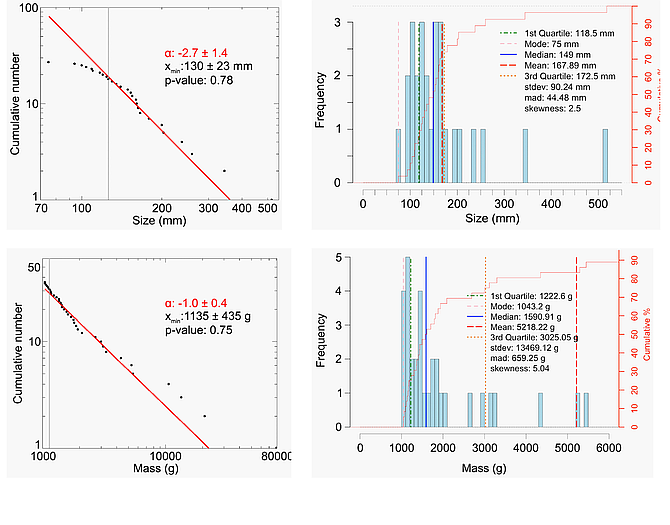Impact disruption of Bjurböle porous chondritic projectile
- 1University of Helsinki, Faculty of Science, Helsinki University, Finland (tomas.kohout@helsinki.fi)
- 2Institute of Geology of the Czech Academy of Sciences
- 3School of Electrical Engineering, Aalto University, Finland
- 4INAF Astronomical Observatory of Padova, Italy
- 5Finnish Museum of Natural History, University of Helsinki, Finland
- 6Institut Supérieur de l’Aéronautique et de l’Espace (ISAE SUPAERO), Université de Toulouse, France
- 7Museum für Naturkunde, Berlin, Germany
- 8Johns Hopkins University Applied Physics Laboratory, Laurel, MD, USA
- 9Space Research and Planetary Sciences, Physikalisches Institut, University of Bern, Switzerland
- 10Colorado Center for Astrodynamics Research, University of Colorado Boulder, USA
Bjurböle meteorite fall occurred in the evening hours of March 12, 1899 and was witnessed by many residents across the Baltic region. The terminal mass fell south of Finnish city of Porvoo (approx. 50 km east of Helsinki) on a frozen sea bay. A single 4-m sized hole was found in the ice surrounded by an 8-m circle of fractured ice and a 20-25 m rim of splashed water and sediment. The largest fragment recovered from the impact site weighed 80.2 kg and was located within the bottom sediment approximately 6-7 m below the ice surface. Several other fragments in the range of 10-20 kg were also recovered along with countless smaller fragments.
The ~200 m/s impact of a single 400-kg Bjurböle L/LL ordinary chondrite meteorite onto sea ice resulted in the catastrophic disruption of the projectile. This resulted in a significant fraction of decimeter-sized fragments that exhibit power law cumulative size and mass distributions (Fig. 1). This size range is underrepresented in impact experiments and asteroid boulder studies. Understanding of the impact disruption mechanism of planetary bodies and knowledge of fragment size and shape distributions are important to planetary defense mitigation efforts.
The Bjurböle projectile fragments share similarities in shape (sphericity, and roughness at small and large scale) with asteroid boulders (Fig. 2). However, the mean aspect ratio (3D measurement) and apparent aspect ratio (2D measurement) of Bjurböle fragment is 0.83 and 0.77, respectively, indicating that Bjurböle fragments are more equidimensional compared to both fragments produced in smaller scale impact experiments and asteroid boulders (Fig. 3). These differences may be attributed either to the fragment source (projectile vs. target), to the high porosity and low strength of Bjurböle, to the lower impact velocity compared with typical asteroid collision velocities, or potentially to fragment erosion during sea sediment penetration or cleaning.

Fig. 1. Cummulative frequency size (longest axis) and mass distribution of the Bjurböle fragments.
Fig. 2. Morphology comparison of the Bjurböle fragments and asteroid boulders.
Fig. 3. Dimmensions and apparent aspect ratio histograms of the Bjurböle fragments.
How to cite: Kohout, T., Pajola, M., Soini, A.-J., Lucchetti, A., Luttinen, A., Duchêne, A., Murdoch, N., Luther, R., Chabot, N., Raducan, S., Sánchez, P., Barnouin, O., and Rivkin, A.: Impact disruption of Bjurböle porous chondritic projectile, Europlanet Science Congress 2024, Berlin, Germany, 8–13 Sep 2024, EPSC2024-116, https://doi.org/10.5194/epsc2024-116, 2024.